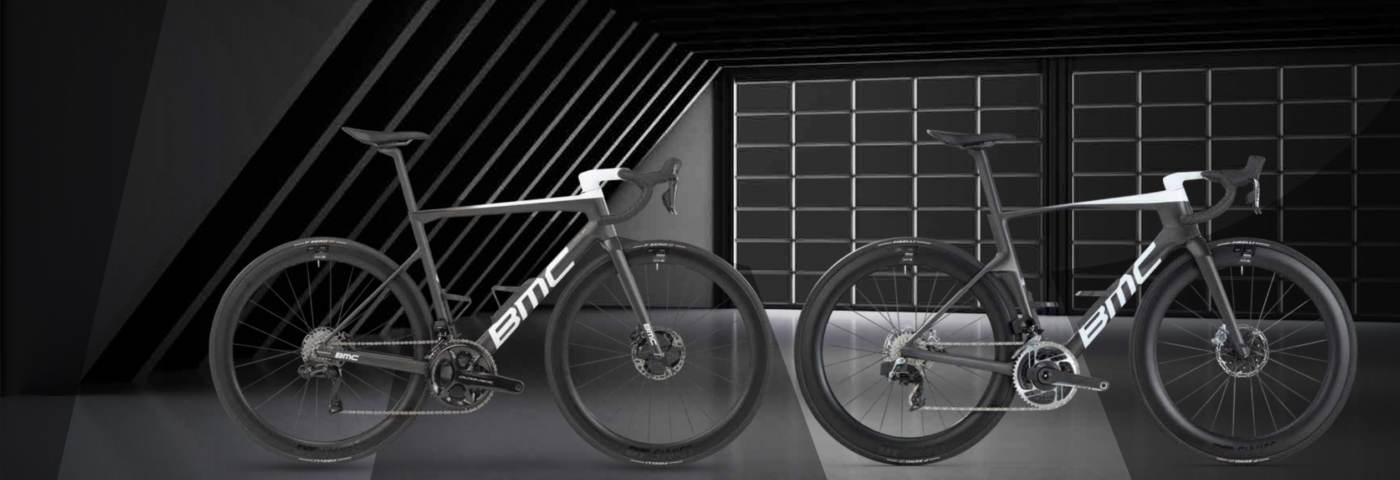2024 marks the End of the Aero Race Bike
It is now 2024, and the era of the aero bike has come to an end. Really?! Was it not all about aerodynamics? Alright, maybe it marks the end of the lightweight bike? Actually, the end of both. In part 3 of our aerodynamics trilogy, we extensively discussed how aerodynamics is usually more important than weight in most situations. However, until recently, opting for an aero bike meant accepting a weight penalty. Fortunately, that seems to be changing with the latest generation of race bikes being both lightweight and super aero.
In 2024, the era of the aero bike and the lightweight bike ended. Modern race bikes now combine lightweight design with superb aerodynamics.
So, what to focus on if you are in the market for a brand new race steed? This is exactly what we will be covering in this article. Beyond the obvious, we will look at the latest models of renowned bike brands BMC and Trek and compare their latest 2024 models to the previous generation. As you can readily observe from the featured image above of the BMC Teammachine SLR and the new BMC Teammachine R (by Escape Collective) there have been some significant changes, especially at the front of the bike.
We will also cover design innovations from 3T, Cervélo, Ribble and Factor. The purpose is to compare and highlight the differences and improvements among them. It’s important to note that these are just examples to help you make an informed decision when purchasing your bike in 2024. Many other brands have adopted similar or the same concepts discussed in this article.
The modern Race Bike has 2 Zones: Speed and Comfort
A good way to think about the modern race bike is the following graphic provided by 3T. It was made for their Strada road bike and divides the bike into 2 parts: the front part, the “Speed Zone” is performance and aero-driven, and the rear part, the “Comfort Zone” is comfort-driven.
The modern race bike can be divided into two parts: the front part, known as the “Speed Zone,” is performance and aero-driven, while the rear part, known as the “Comfort Zone,” is focused on comfort.
This makes a lot of sense. As we know from our deep dive into aerodynamics, the front matters most to maximize the aerodynamic benefits as the bike hits “clean air”. At the back, the aero penalty is less likely a relevant factor. Therefore, improvements in compliance at the rear of the bike can significantly enhance comfort since the rider bears most of the weight in that area.

BMC Race bikes: 2023 Teammachine SLR01 vs 2024 Teammachine R
BMC, the Swiss brand known for its racing bikes, used to promote two models for racing – the all-around “Altitude” series Teammachine SLR and the more aero-focused Timemachine. The Timemachine is heavier and closely related to their time-trial bikes. It even has the option for TT bars. However, they recently launched their new top-of-the-line race bike, the Teammachine R, which unites all their previous models. Unlike the previous Teammachine SLR01 line, the Teammachine R is a new model marking the start of a new era.
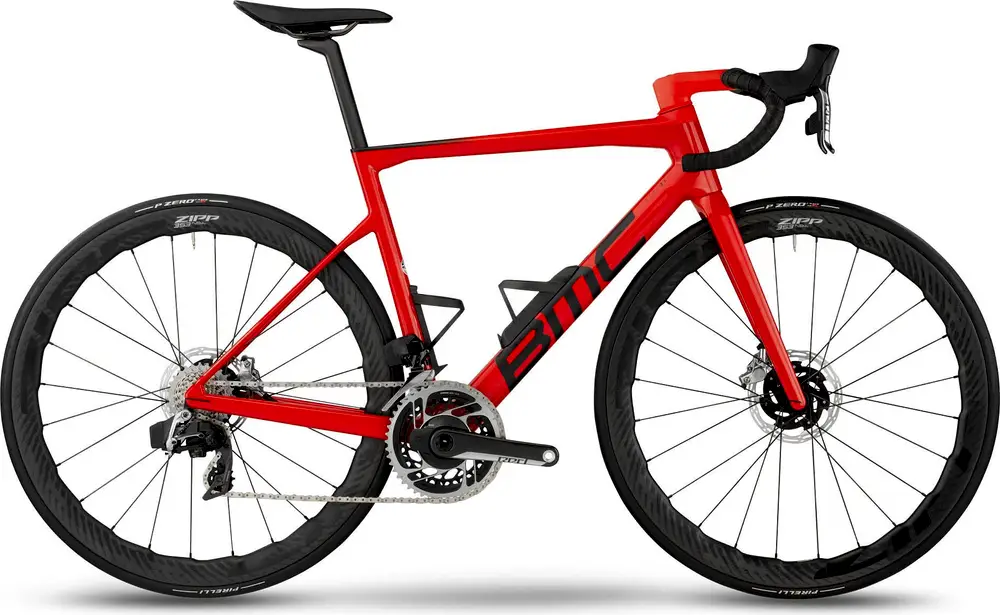
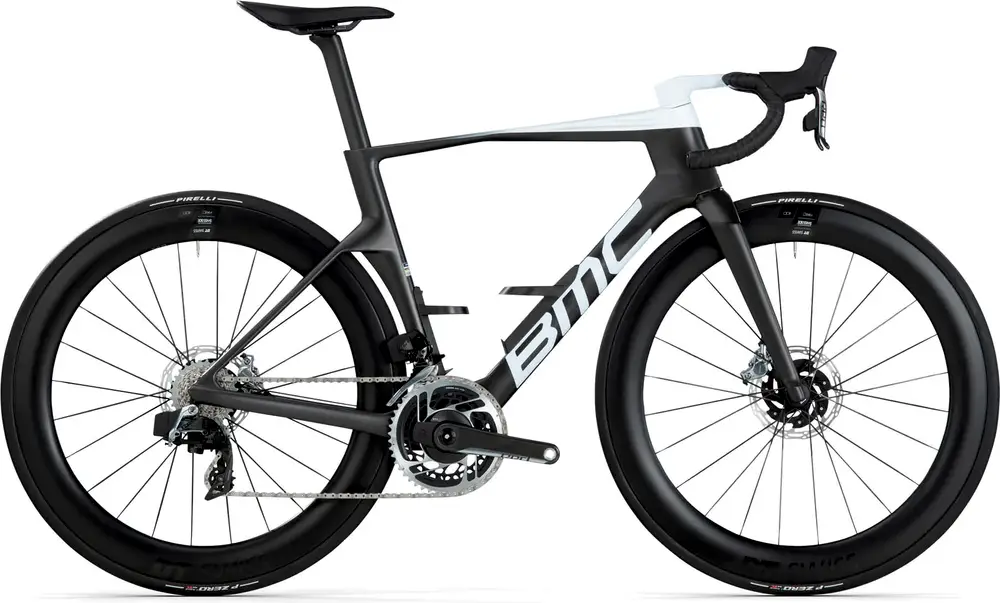
From pure aero to allrounder: The Trek Madone SLR09 Gen 6 and Gen 7
Trek also used to have two models for fast racing in their collection: the lightweight Emonda and the aero-optimized Madone. In a previous article, we covered that the Madone is generally faster than the Emonda except for very steep gradients. The 2024 Madone model has eliminated the difference, creating an all-around aero bike suitable for modern racing. Therefore, we can now simply refer to the Madone as Trek’s new modern race bike.
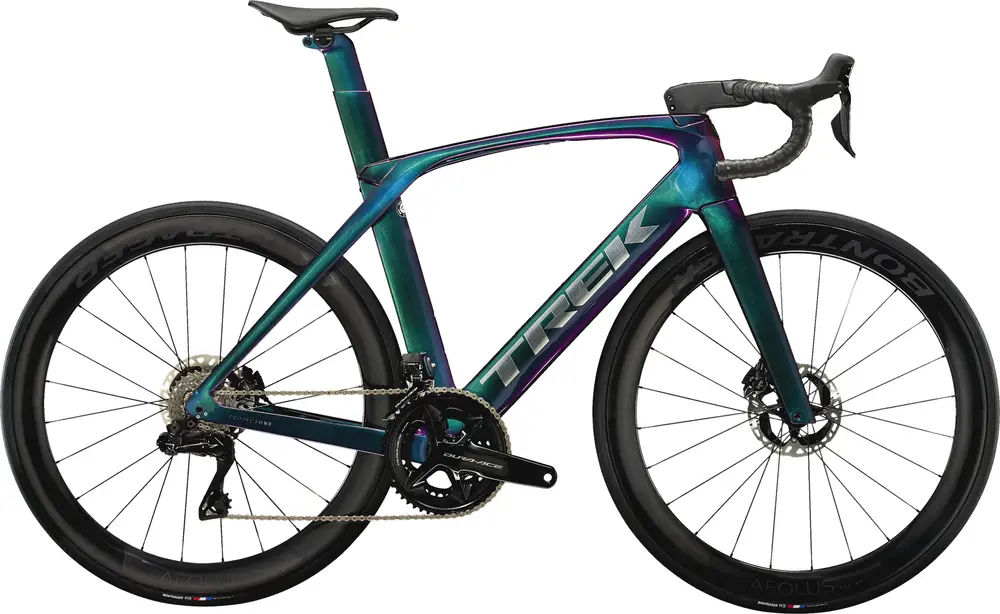
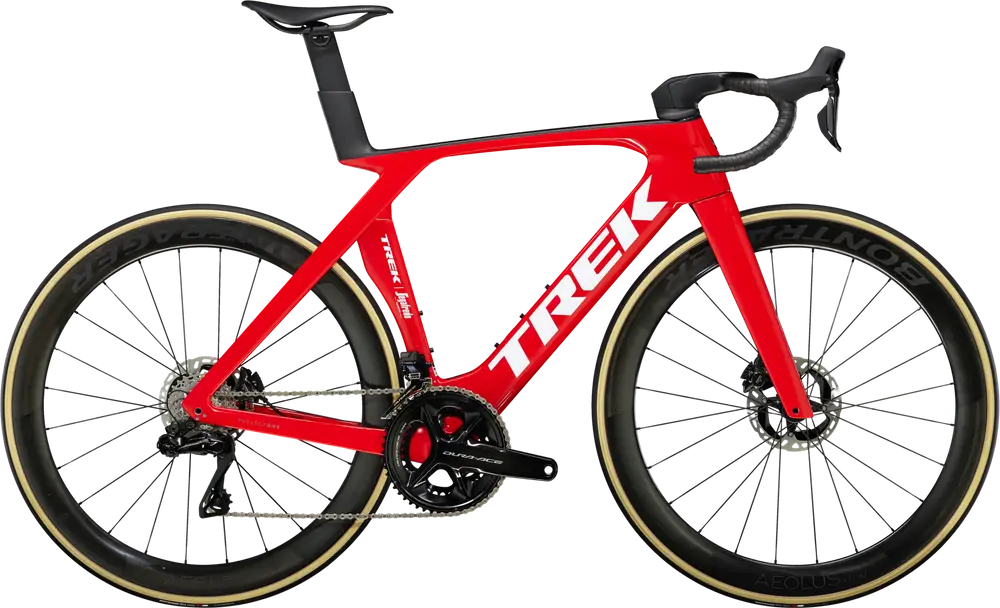
The Speed Zone: The latest Innovations at the Front of the Race Bike
Every aero Race Bike is lightweight now
As already pointed out in the introduction, the weight difference between aero and lightweight has all but disappeared. Aero or lightweight. Can we have both? Yes, we can.
Can we have an aero and lightweight bike? Yes, we can. The latest aero road bikes weigh around 7 kg. Unless specific requirements dictate otherwise, there is no performance rationale for pursuing lightweight.
The 2024 version of the Trek Madone shaves another 300 g of the setup, coming in at about 7.1 kg for a size 54 frame, depending on the spec. All that while saving you a minute on the hour when riding at 45 km/h. Still, the Emonda remains the lightest at 6.9 kg, but we are getting ever closer.
BMC pulled off the same trick for the Teammachine R. It is in the same weight range as the Teammachine SLR01 and comes in at a little over 7 kg. Although the frame still weighs 910 grams, optimizations were made to other bike components to minimize the difference from the 2023 SLR01.
So unless the UCI decides to reduce the weight limit below 6.8 kg, this marks the end of the lightweight performance race bike.
Cockpit and Handlebars: Streamlined, flared and as compact as possible
The front of a bike plays a crucial role in ensuring smooth airflow and hence good aerodynamics. This is a well-known fact for bike manufacturers, who have made significant efforts to streamline the shape of the cockpit. With the help of wireless gear shifting, this task has become much easier. Furthermore, all new aero handlebars introduced in 2024 are designed to minimize the presence of non-aero round shapes and are flat on the top.

Furthermore, the new UCI regulations for 2023, abolished the previous “3:1 rule” that restrained the dimensions of bike components. This meant that the maximum length-to-width ratio of any component could be no greater than three-to-one. The current regulations now state that the minimum and maximum cross-sections of road or track handlebars and stems are simply limited to 10mm and 80mm. Ribble has utilized the newfound freedom by introducing a novel handlebar design. The design aims to reduce the overall drag of the rider and bike by aiming to improve the way the air hits the rider behind the bar. This approach is claimed to be more effective than just reducing drag in isolation.
The next step has been optimizing the aero hoods position, now commonly known as the most aero position. See the picture of Remco Evenpool on the right with the 90-degree bent of the elbows and keeping the hand and arms inside.
This position can be further optimized by adding flare to the handlebars and minimizing the size of the bars on the top to the minimum.
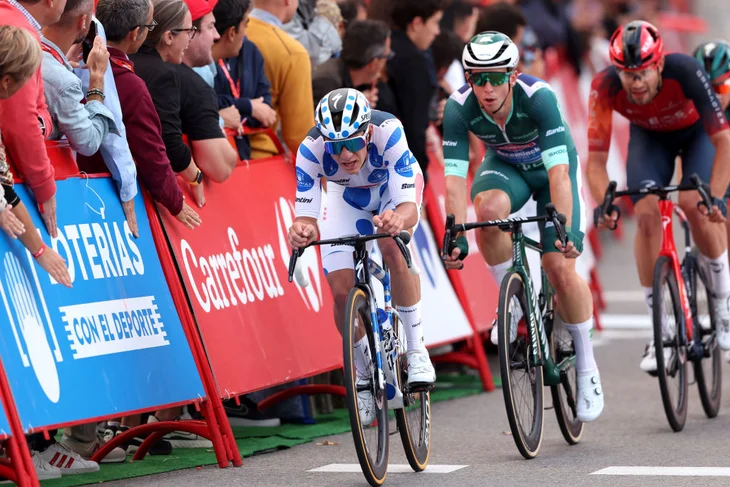
To this aim, the new Trek and BMC handlebars are now in new shapes. The BMC handlebar is currently available only in one size, 36 cm on the top and 42 cm on the bottom. Similarly, the Trek Madone SLR Gen 7 barstem is always 3 cm narrower at the top than at the bottom. For example, 37 cm at the top and 40 cm in the drops. This has brought some very significant improvements in CDA of the Gen 7 Madone, as the data below shows.

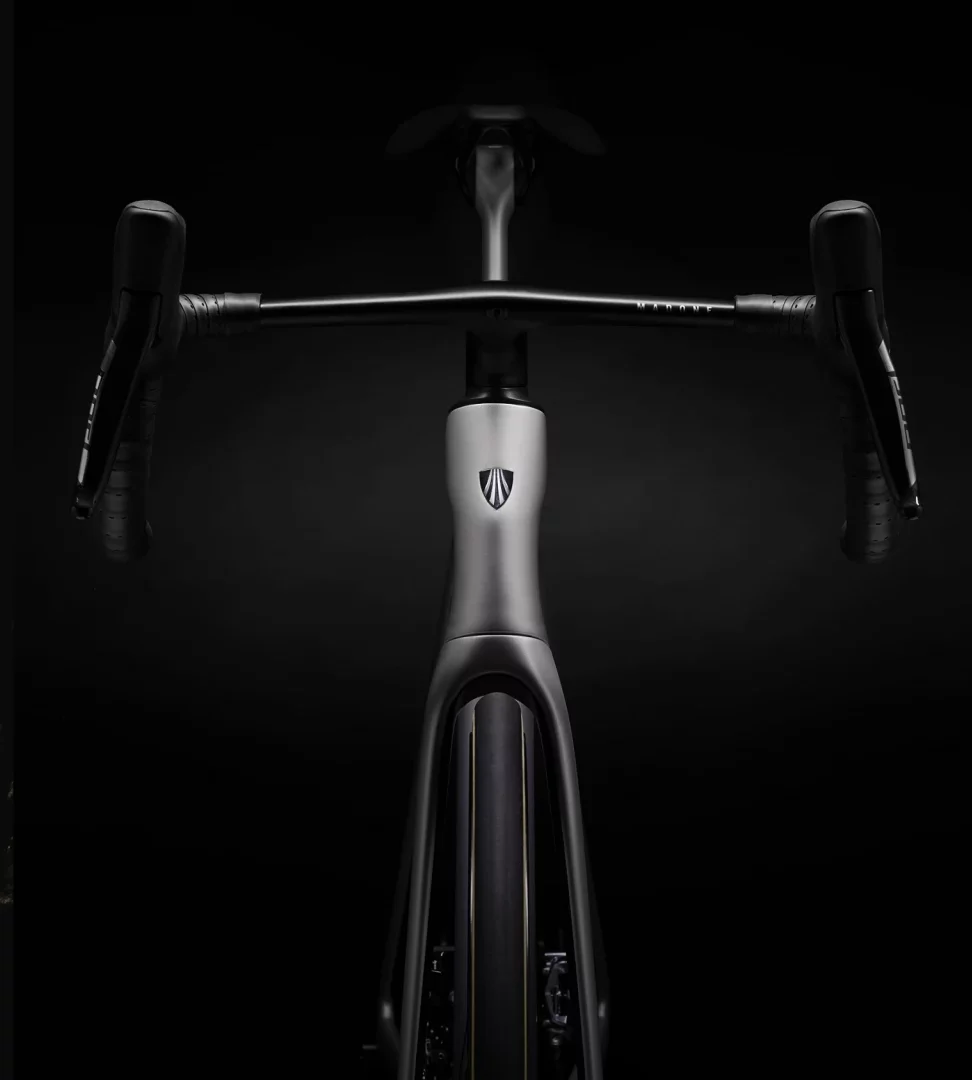
Embracing wider Fork Design for aero and stability
It probably all started with the Lotus HOPE HB.T Track bike, which showcased an incredibly wide fork and was created to be ridden by Team GB at the 2020 Tokyo Olympics.
Essentially, two options exist for improving the fork aerodynamics at the front of a race bike. Previously, forks were mostly designed to be as small as possible to minimize the area exposed to the wind. However, that limits tire width, which is trending towards 30 mm, to optimize rolling resistance and tire pressure. An alternative approach is to widen the fork in order to create more space for the turbulent air produced by the front wheel to escape from the frame. As the front wheel spins, the air becomes compressed as it tries to pass through the fork, which increases the drag. By widening that area, the drag is reduced, which leads to a decrease in aerodynamic drag in that area and also improves the airflow onto the frame and the rider. Lastly, the wider design alters the bike’s feel, particularly when cornering at higher speeds. Because the pressure point from the handlebar down is straighter, it provides more stability, and the bike feels more like riding on a track.
Wider bike forks improve aerodynamics by directing turbulent airflow away from the frame and reducing aero stall. They also enhance stability when cornering.
BMC calls their fork “Halo fork” and aptly describes it as such “The ultrawide parallel fork legs are unlike anything else in the peloton. When rotating at speed, the front wheel produces a significant amount of turbulent air. We increased the inner fork spacing to allow that turbulent air to be shuttered away from the frame and reduce aero stall.”
Trek has chosen a more traditional design for their Gen7 Madone, but the broader fork design is expected to be embraced in the future. It’s probable that other brands will also follow suit and adopt this design choice as it gains popularity. Other examples of bikes with wider forks include the Ribble Ultra SL R or the Factor Ostro VAM.

The UCI allowed the Head Tube reinforcement zone to double in size
The changes in UCI equipment rules in 2023 brought another change that allows road race bikes to be more similar to time trial bikes: the headtube width can now be made of a reinforcement zone of up to 16 cm, double from the previous 8 cm. In the words of the regulation: “The effective width of the head tube zone may not exceed 16 cm at the narrowest point between the inner join of the top tube and down tube and the front of the box for the head tube.”

The UCI has introduced the new “160 millimeters” rule to ensure fair competition between taller and shorter riders in terms of aerodynamics. This rule also provides enough flexibility to manufacturers so that they can design frames that are consistent across different sizes while maintaining an adequate level of rigidity for safety in the sensitive area of the frame.
One of the first manufacturers to adopt this change was 3T, with their redesign of the new Strada road bike. The bike’s appearance may appear a bit unusual at first glance, but we will likely get used to it as most manufacturers are changing their frame designs accordingly. As shown below, BMC and Trek also follow the same trend.
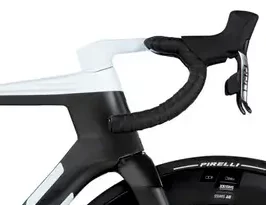
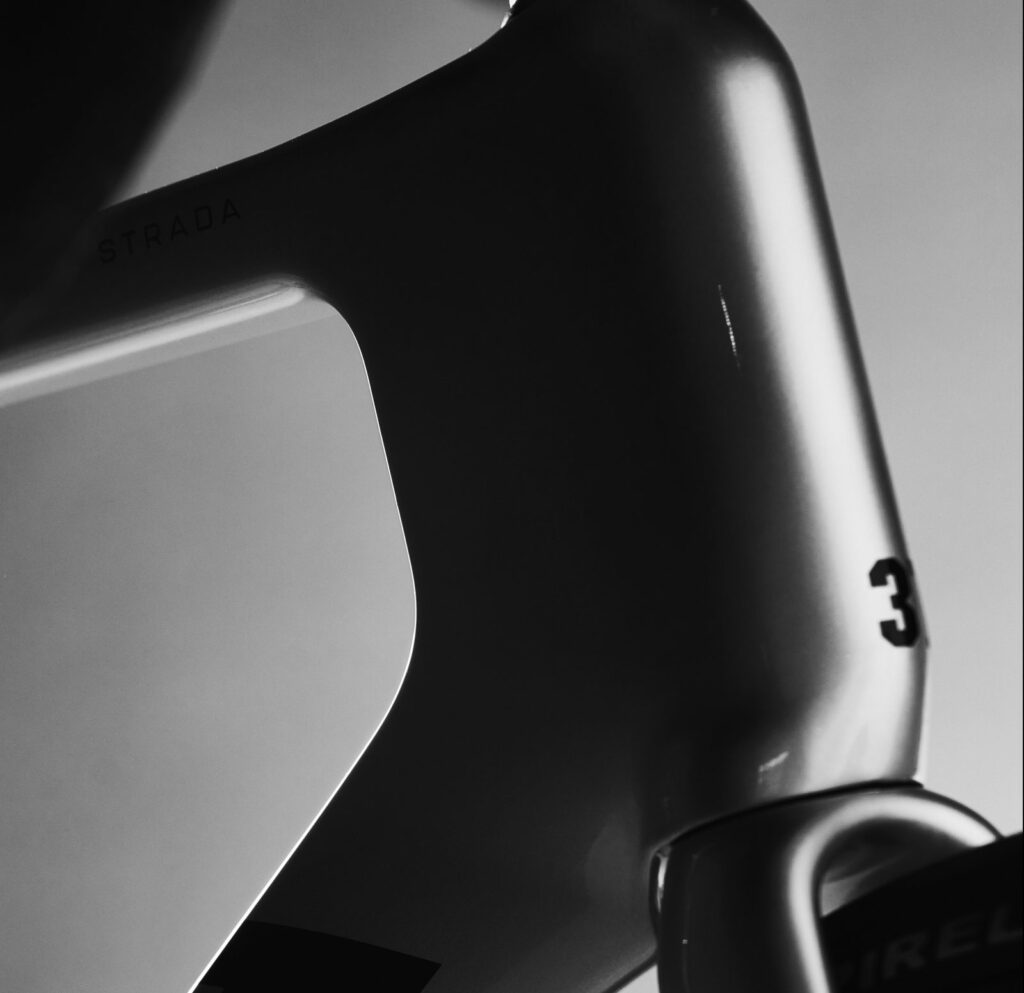
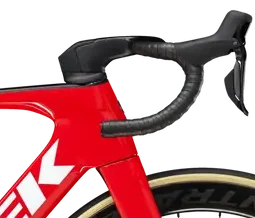
Bottom Brackets as deep as the high seas
The bottom bracket is another area that has continued the trend of getting larger. BMC calls theirs “Mariana Bottom Bracket”, named after the deepest oceanic trench on earth. Alright, someone in the marketing department had a good vacation somewhere or a great session with ChatGPT. Never mind the name choice, the latest 2024 Trek Madone similarly adopts the design. Arguably, it is even deeper. Maybe it should be named after the “Valles Marineris”, the largest canyon of the solar system found on Mars?
The increased depth helps to connect the bottom bracket, down tube, and seat tube and also extends to connect chainstays to the bottom bracket and seat tube. As a result, the overall surface area is larger, which aids flow transition on the rear rim. According to BMC, this leads to a reduction in tire flow separation. Moreover, this likely also increases stiffness in that critical area.

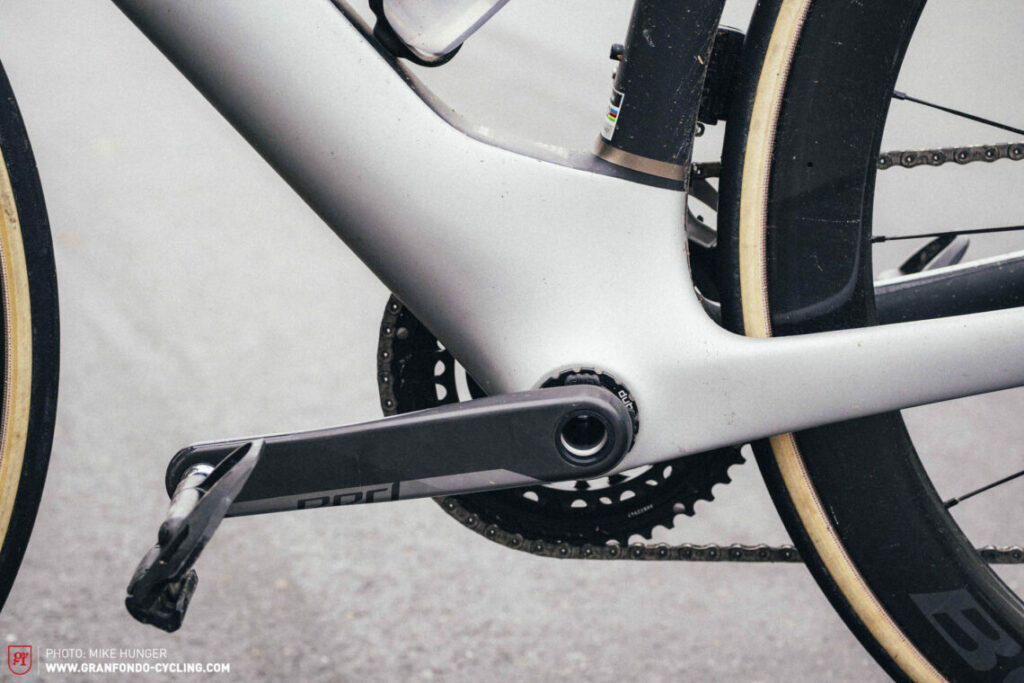
For home mechanics and riders, the type of bottom bracket can also be an important consideration. Everyone who has been riding for a while can probably tell a story or two about a creaking press fit bottom bracket. While press fit may work well in theory, due to the bike industry’s manufacturing tolerances being far from perfect, they more often than not break easily and require tools from the ages of the cavemen.
Can we agree that press fit bottom brackets should be a thing of the past? Given manufacturing tolerances they break easily and require tools from the ages of the cavemen. Let’s go back to threaded for the modern race bike!
As such, it is a welcome change that Trek has opted for the more reliable T47 treaded standard, which is also used by Factor with the Ostro VAM. Similarly, all 3T bikes have threaded bottom brackets. Hopefully, by 2024 and beyond, more manufacturers will prioritize threaded designs that can be easily serviced and maintained.
The Back of the Bike is the Comfort Zone
Aerodynamic gains are generally less pronounced when moving backward from the bottom bracket towards the bike’s rear. Manufacturers have the possibility to increase their focus on weight and compliance.
Dropped seat stays and curved seat tubes are here to stay
In general, for the comfort zone of the bike, the now classic techniques are applied to increase compliance and still optimize aerodynamics. Most importantly, to meet their weight goals, this is the area to counterbalance the increase in tube size, which happened at the front of the bike. While the latest generation of bikes has seen fewer obvious innovations, most of the design pattern from previous generations have been carried over.
Classical design choices include dropping the seat stay to extend the seat tube and increase flexibility. Following BMC’s example, this design pattern has been adopted by many manufacturers. Another design choice is the distinctive curved seat tube of the Cervélo S5, which can also be seen on the 3T Strava. Additionally, BMC has focused on reducing the weight of the seat post and redesigning the clamp to improve aerodynamics. The extent to which these changes affect the rider’s comfort is still debatable, as the most crucial factor in creating a comfortable ride is still using low tire pressure and wider tires.

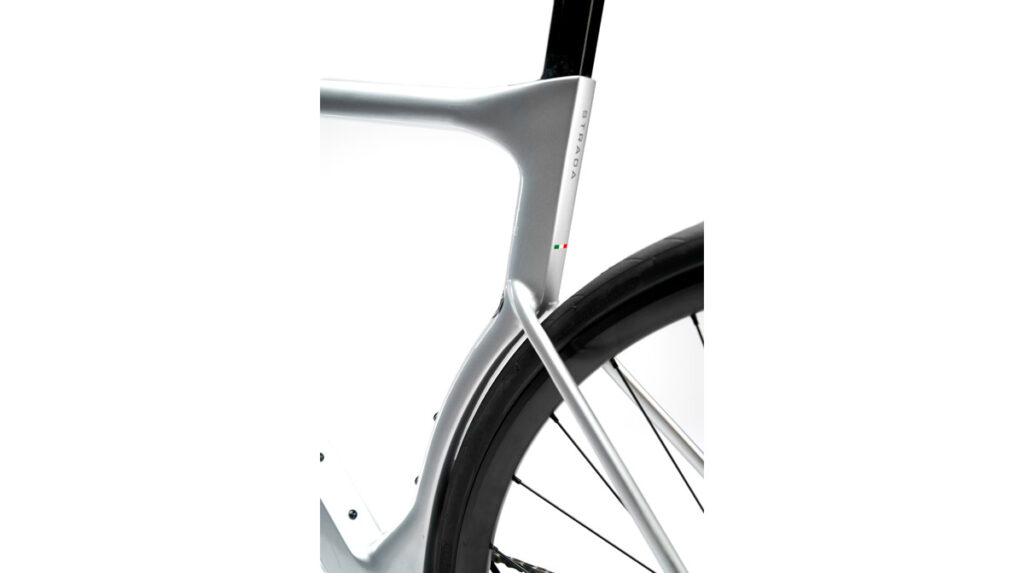
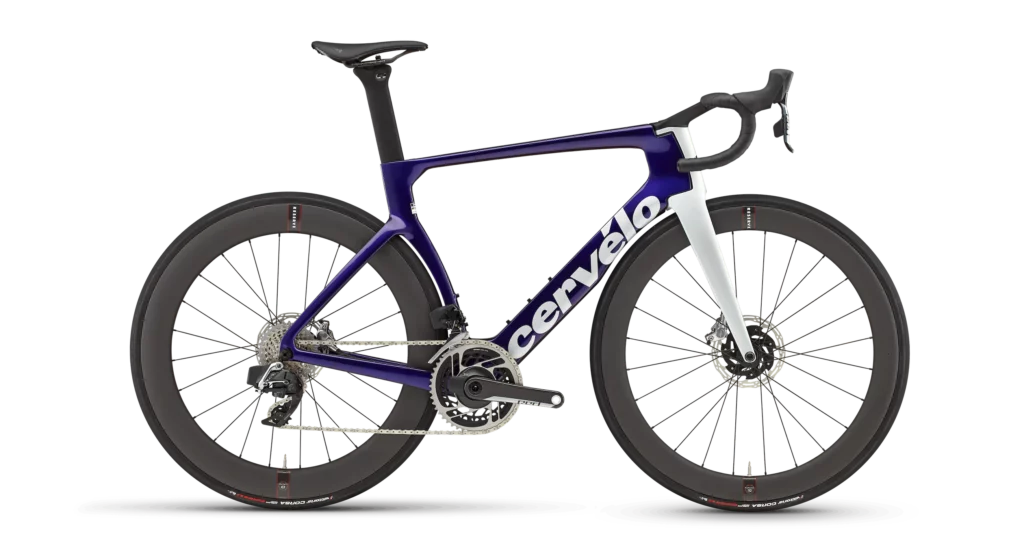
The Trek Madone IsoFlow makes for a great story
Trek has redesigned the area where the seat post and seat tube meet, giving it the iconic new Madone look. They call it IsoFlow and report its benefits at length in a blog post. The IsoFlow cavity located under the saddle sets the seat post back, providing more comfort while riding. However, the main advantage of this design is that it directs the high-speed airflow from the front of the bike toward the back. This results in less turbulent and low-pressure air at the back of the rider, reducing the aerodynamic drag. The video below shows the turbulent air in yellow and the redirected air in purple.
The idea and thinking behind this engineering solution are refreshing, and it’s always great to see new solutions being developed. Those who read our trilogy on aerodynamics will recognize that the concept is sound and will be effective. Despite its general efficacy, the question remains: what will the impact be?
Trek provided a graph comparing the CDA change between the 2019 Madone (yellow color) and the 2023 Madone (red color) at different yaw angles. There is a difference at higher yaw angles, but interestingly, there is no difference at lower yaw angles or even zero degrees. Should that not be the case, given the explained mechanism? From my limited understanding, it should work better at lower yaw angles? Nevertheless, it is still faster, especially around 5 to 20 yaw. For those confused by the terms CDA and yaw, you are invited to read our previous posts on aerodynamics.
The front of the bike represents the speed zone where aerodynamics are crucial. Towards the back of the bike, the focus should shift to enhancing comfort and reducing weight, as there is not much room for improvement in terms of aerodynamics.
The graph also shows data for the 2023 Madone equipped with the newly optimized handlebar, which has been reduced in size by 3 cm (black color). As you can see, the improvements in aerodynamics are quite significant across the board, resulting in lower CDAs at every angle.
This highlights an important point we discussed earlier: the front of the bike is where aerodynamic performance truly matters, as it is in the “speed zone.” At the back of the bike, there is already so much air turbulence that even the most innovative design choices can only do so much. Therefore, the focus is on providing comfort in this area.
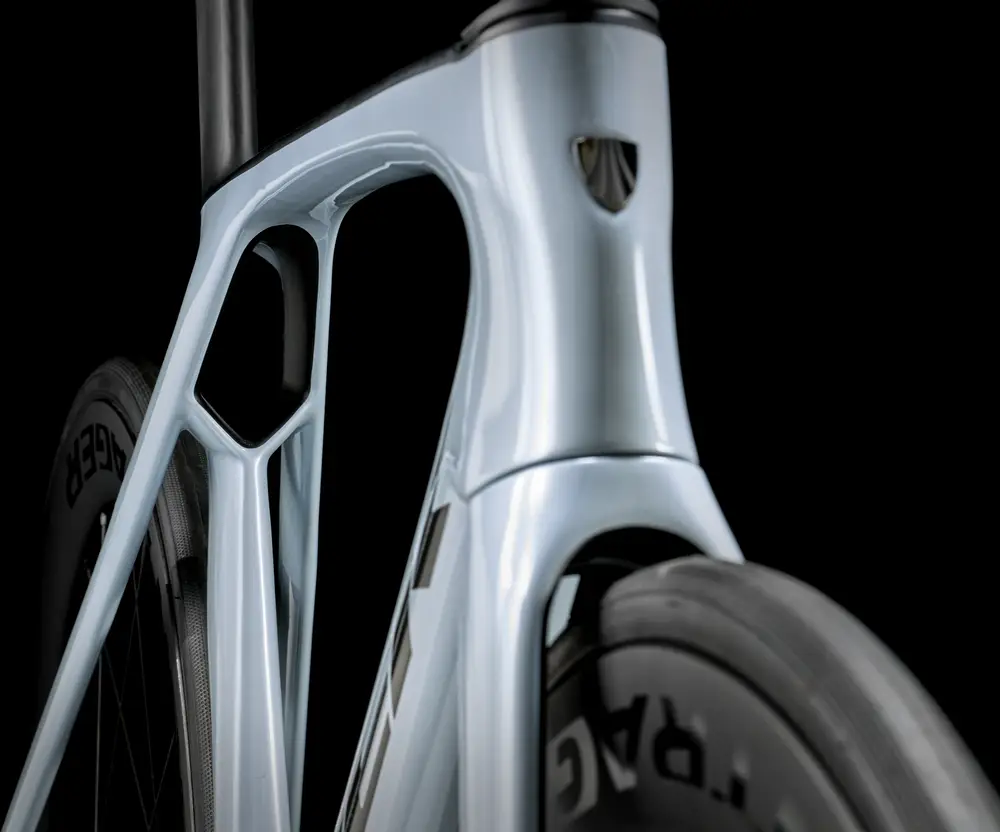

What will you race on in 2024?
We hope this article has given you some guidance if you are looking for a new road race bike in 2024. We focused on examples from BMC, Trek, 3T, Ribble and Cervélo, mainly because these were the brands we know best and found good information on. The concepts discussed are in no way limited to these brands! If you look around your local bike shop or different brand websites, you will find many, if not all, the concepts also being used in the latest generation of race bikes from most manufacturers. And if not…well maybe they are just late to the game. Ultimately, they are all subject to the same physics in their CFD software, have similar material and optimize for the same price points.
With that, wishing you a fast 2024 and consider following us on Instagram, Threads, and Strava to be part of the discussion. As a subscriber to our mailing list below, you will always stay updated, and we will do our very best to keep you informed to stay fastest in 2024 and beyond.
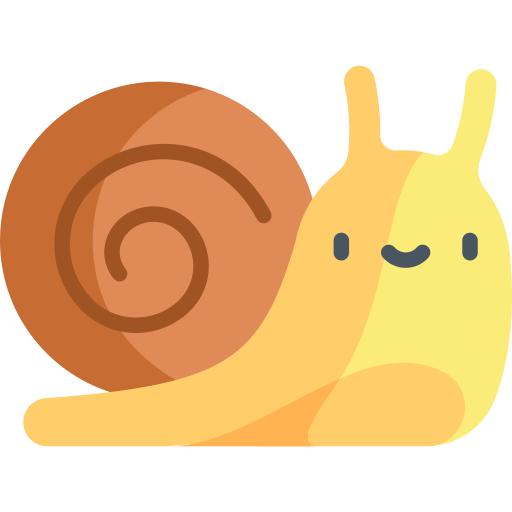 Made me Slower
Made me Slower
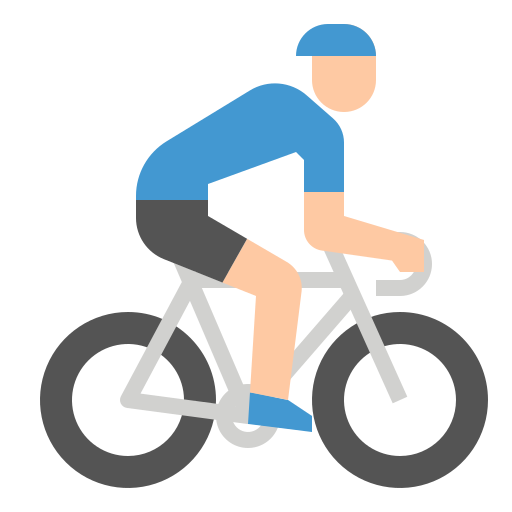 Same, Same
Same, Same
 Made me Faster
Made me Faster

